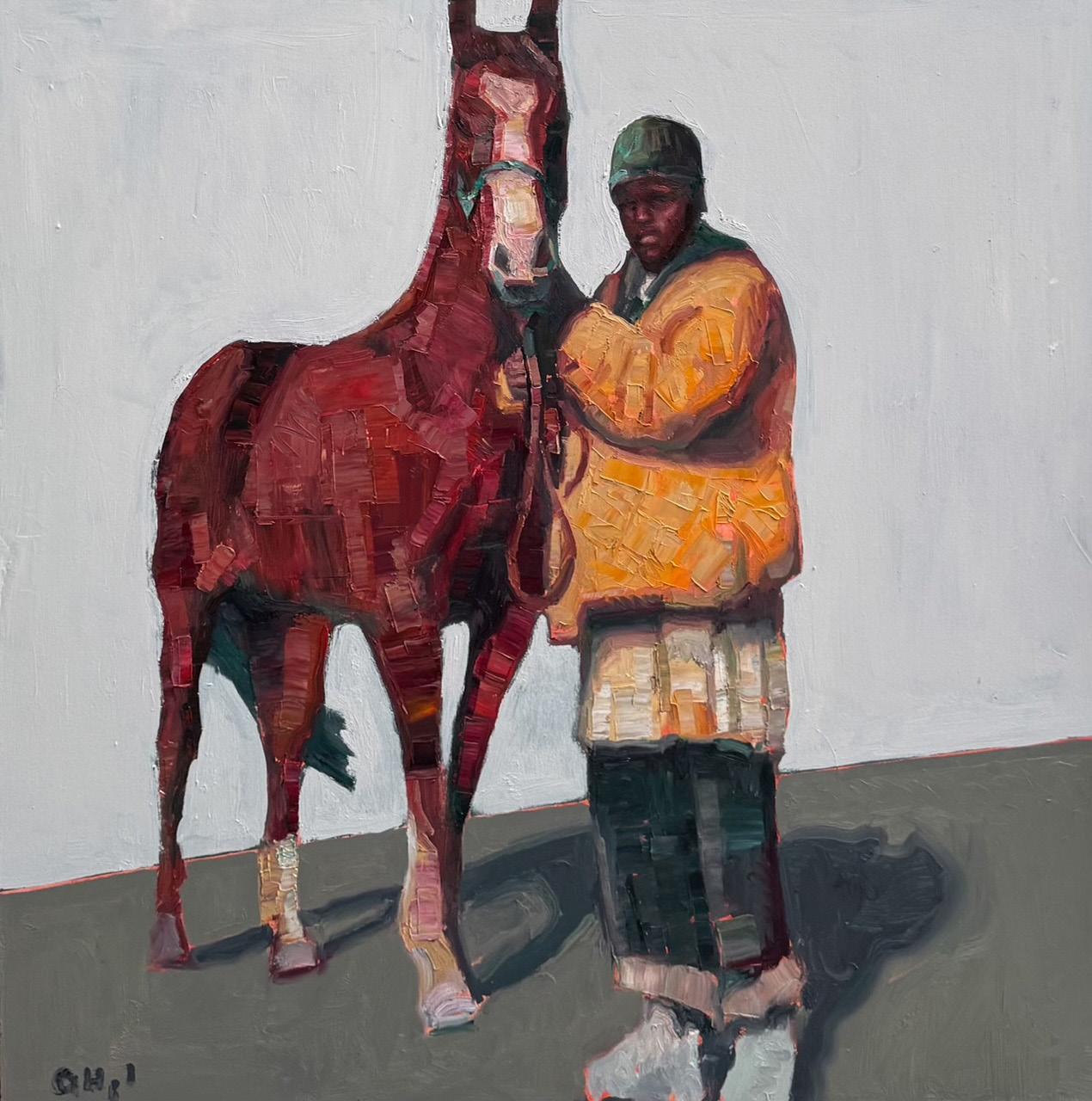
AARON HAZEL a weekend with
Aaron Hazel is an award-winning artist who focuses on minorities of the West, who are vastly underrepresented in general academia. He believes that art should not only be aesthetically pleasing, but also carry a message and bring attention to important issues. This belief is reflected in his choice of subject matter - often highlighting the struggles and triumphs of marginalized communities. Hazel will be joining Manitou for a weekend of live art demonstrations, where attendees will have the opportunity to see him in action and learn about his creative process. Through his live demonstrations, Hazel hopes to inspire others to explore new perspectives and challenge societal norms through art.






















weekend 48" x 48" Oil
Zozobra
The burning of Zozobra, also known as Old Man Gloom, is a cherished Santa Fe tradition that began in 1924. Artist William Howard Shuster, Jr. created a 6-foot effigy and burned it in his backyard, drawing inspiration from regional folklore. The name "Zozobra" is derived from a Spanish word that means "anguish," "anxiety," or "gloom." Shuster and his friends, including newspaper editor E. Dana Johnson, also drew inspiration from Mexican cartonería (papier-mâché sculpture) and popular monster movies like Frankenstein and King Kong.
Initially, the tradition aimed to inject some playfulness into the more didactic Santa Fe Fiestas and distract people from the economic hardship of the Great Depression. Since 1926, Zozobra has been burned publicly as part of or before the annual Santa Fe Fiestas, traditionally held on the Friday before Labor Day.
Over the years, the effigy has grown significantly, evolving into a 50-foot tall marionette made of wood, wire, and cotton cloth, stuffed with hundreds of bags of shredded paper. In keeping with its symbolic roots, people can stuff their "glooms" into Zozobra, such as pieces of paper, hospital gowns, wedding dresses, photo albums, or mortgage papers, to symbolize the burning away of negative energy.
2024 marks the 100th anniversary of the burning of Zozobra and it remains a vibrant and integral part of Santa Fe's cultural heritage, symbolizing renewal and the casting away of personal anxieties and misfortunes. Aaron Hazel celebrates this tradition with the following paintings of Old Man Gloom through the years.











